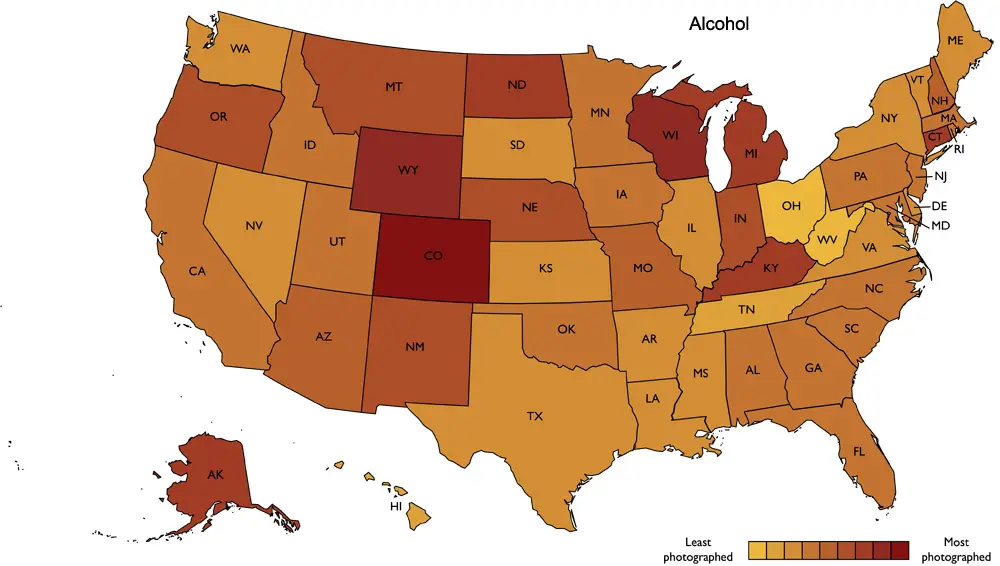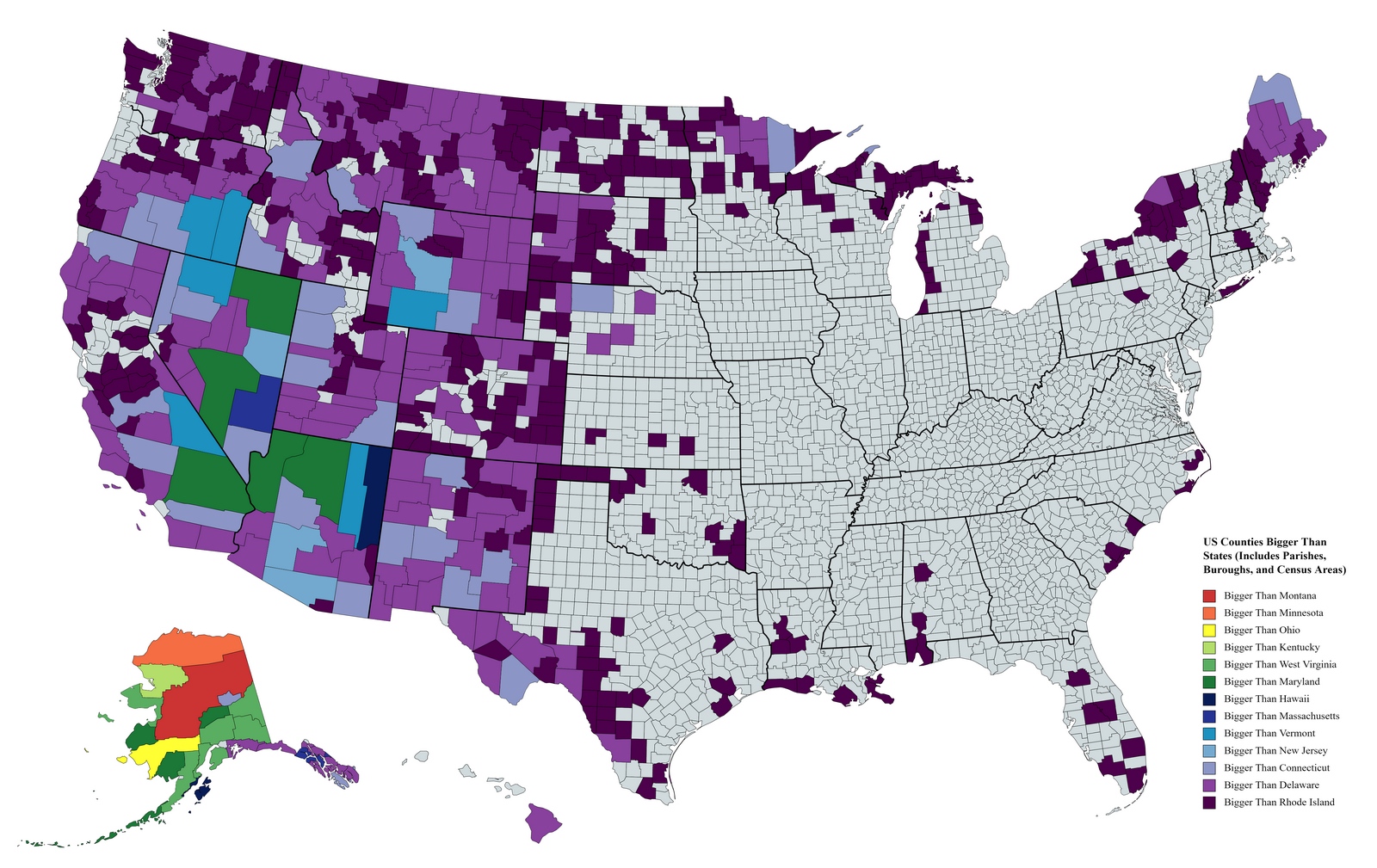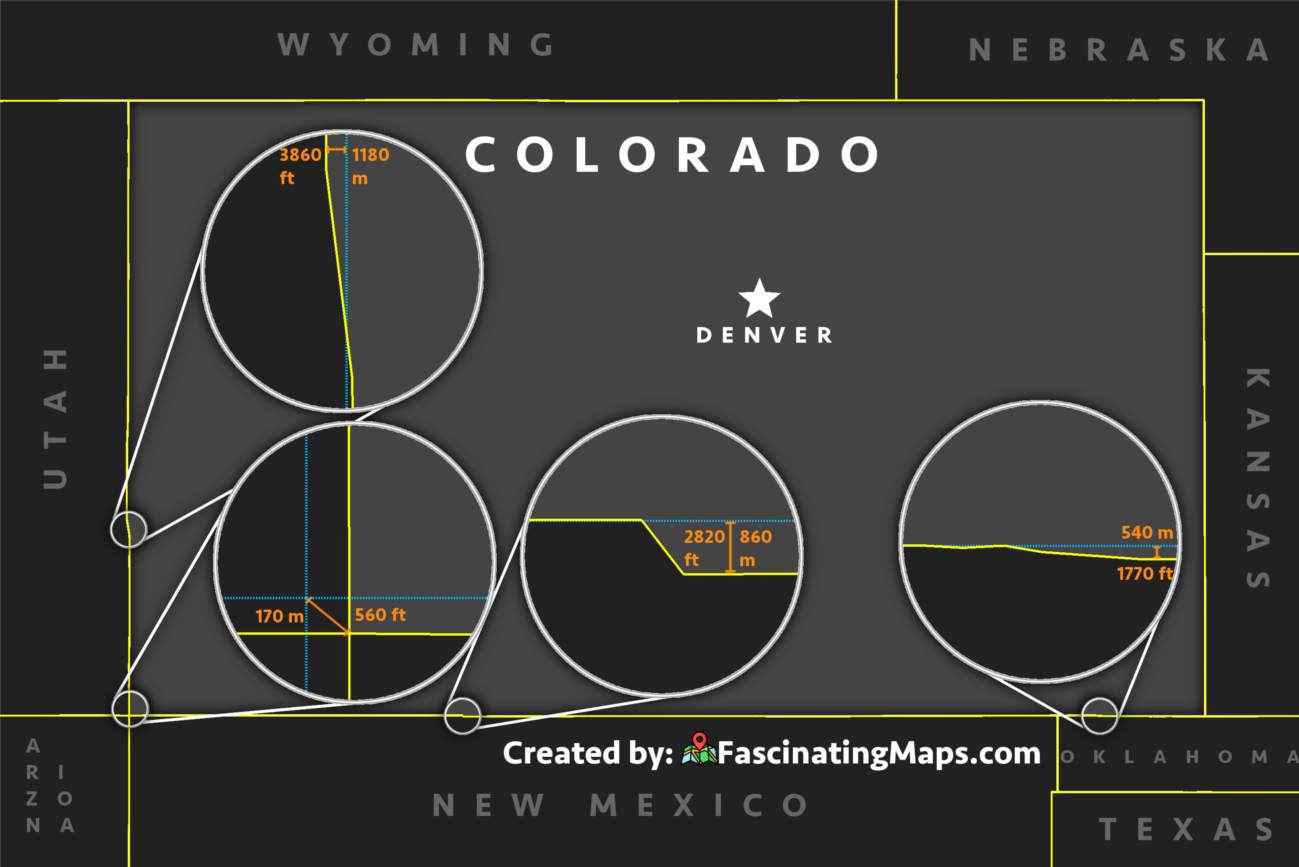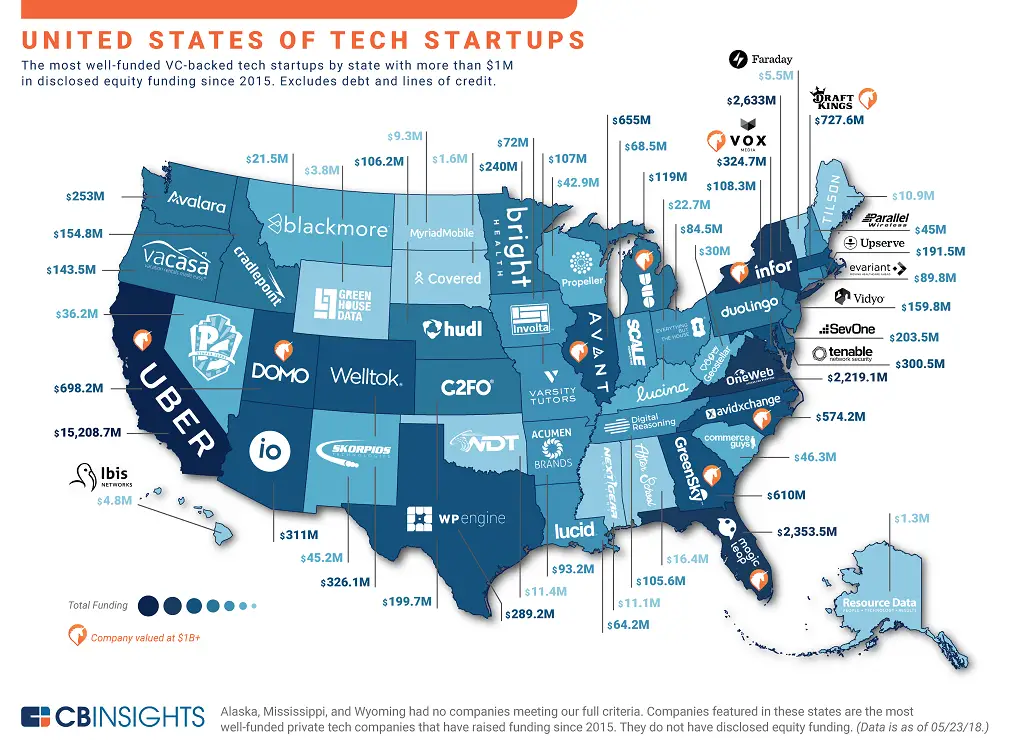U.S. States with economies smaller than the San Francisco Bay Area
In 2017, the San Francisco Bay Area was more than a cluster of tech campuses and venture capital firms – it was an economy so large it outpaced most of the United States. That year, the region’s GDP reached about $501 billion, which meant its economy was bigger than that of more than forty states.
This is exactly what the map below illustrates:
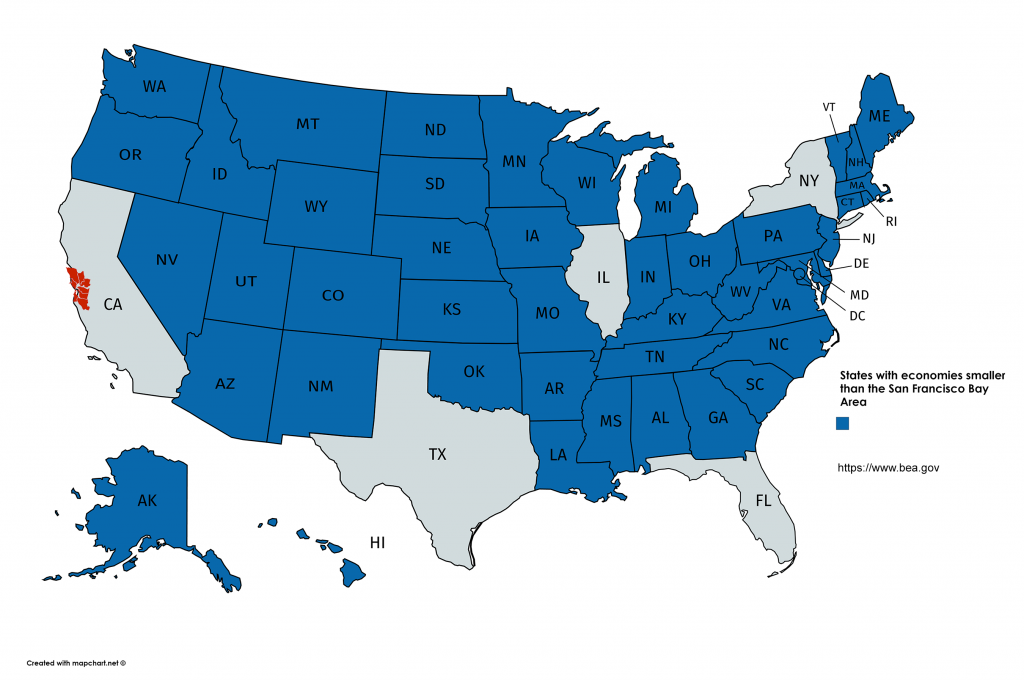
At a glance, you can see just how unusual that was. Alabama, Colorado, Indiana, Minnesota, Wisconsin, Arizona, Oregon, Washington, and dozens of other states all had smaller economies than the five counties of the Bay Area. Only a handful of states, such as Texas, New York, Florida, Illinois, and California as a whole, managed to stay ahead.
So what happened after 2017? The Bay Area continued to grow, though at a slower pace than during the tech-fueled boom years. By 2023, the San Francisco–Oakland–Berkeley metro posted a GDP of about $779 billion, keeping it among the very top U.S. regions. That figure still surpasses the economies of most states today, even after the pandemic reshaped work, housing, and investment trends.
But within California itself, there’s one region that ultimately stands larger. The Greater Los Angeles area, stretching from the city proper through Orange County and into the Inland Empire, recorded a GDP of about $1.295 trillion in 2023.

